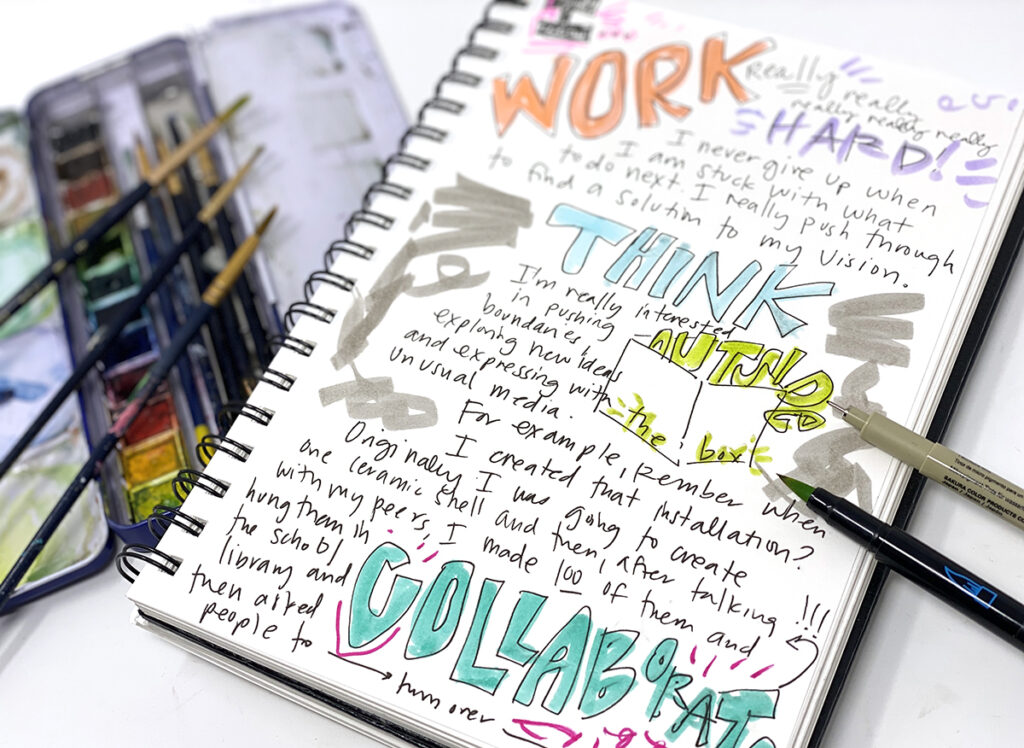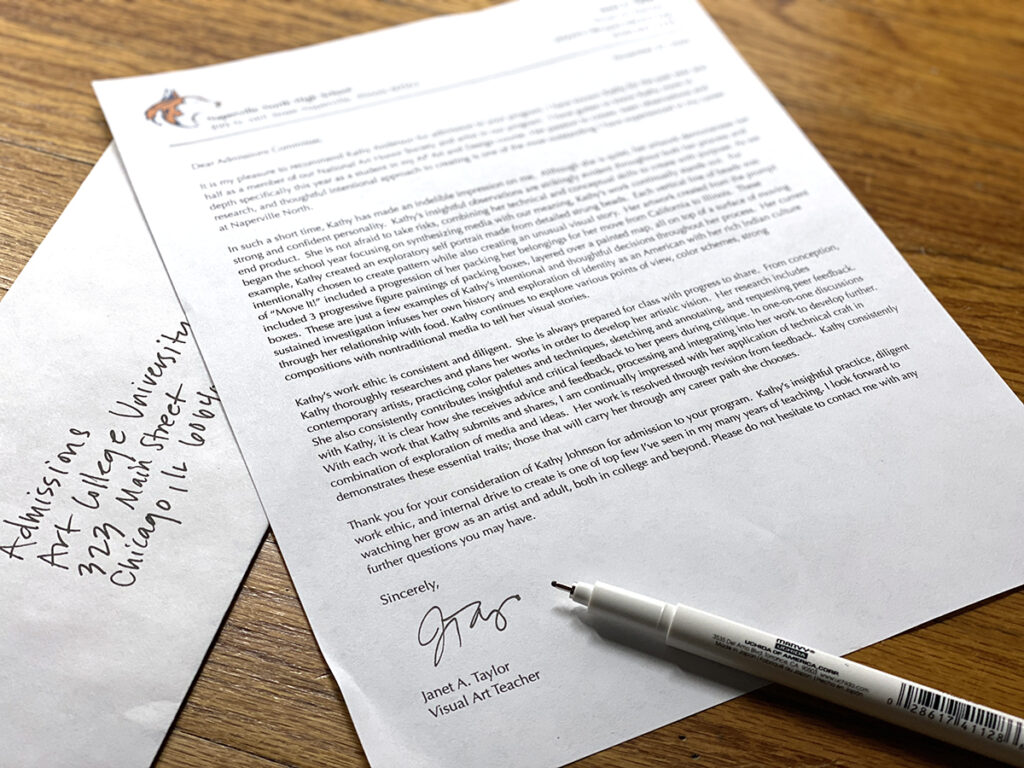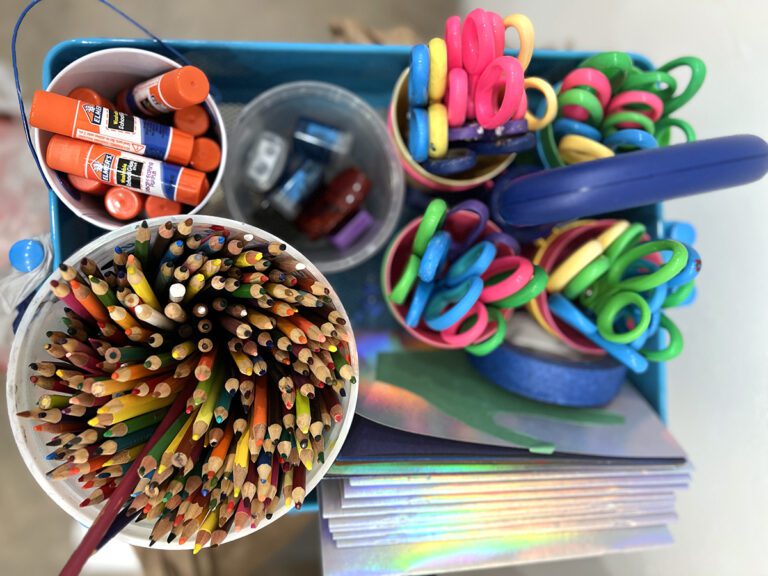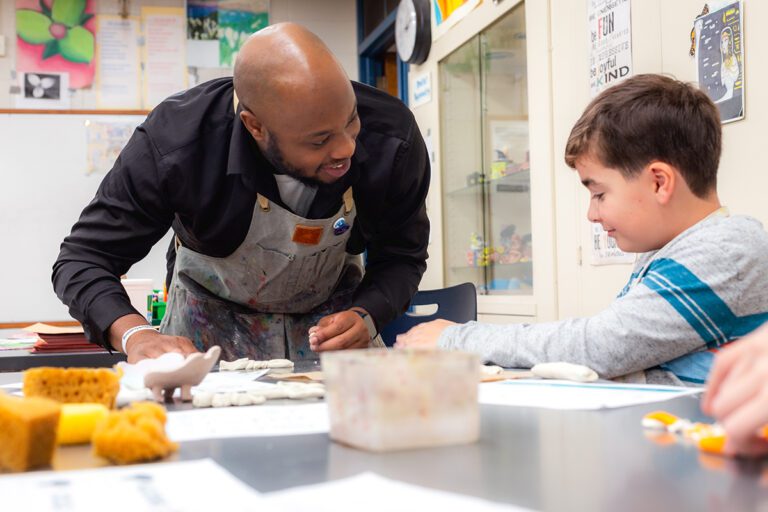When your classes start rolling, the recommendation requests start piling up. These early fall months bring the first big push for college applications and early admissions. Students hope to get into their college of choice. As a result, they come out of the woodwork to ask for well-written letters.
What makes up a quality college recommendation letter? How can you bolster students while being honest and reflective? And how can you be more efficient and organized to make this extra ask as painless as possible?
We have 10 tips to help you plan and write the best recommendation letters.
1. Gather information about your student.
Even if you know your student well, make sure you have all the correct details. Create a Google Form to collect the pertinent information directly from your students.
Your Google Form can include the following:
- General information such as the student’s name (legal, preferred, and pronouns), classes they took with you or in your art department, and extracurriculars related to their field of interest.
- A list of colleges to send the letter to.
- The area they are interested in pursuing and why.
- An option to upload the student’s resume.
2. Narrow the focus and be specific.
Ask your students to provide the top three qualities or characteristics to prioritize in your letter. Students often ask several teachers for recommendations. While repeating a strength shows consistency, pick a few stand-out qualities and elaborate on those. As their art teacher, you have a unique position because of your content area and your relationship with them. Commend students on their critical thinking skills, time management, and process planning. These 21st-century skills apply to any field of study or career path.
Ask the following questions:
- What are three qualities you demonstrated in my class?
- What strengths do I know the best about you (more than any other staff member)?
- Do you remember a specific time or moment when you demonstrated the above quality?
3. Find out the logistics.
Students should provide a “drop-dead” date, a “nice-to-have-by” date, and details about submission. You can gather all of this information in the Google Form discussed above.
Further logistical points to get clarity on:
- The submission deadline.
- The letter format (snail mail, sealed and signed, Common App, or other).
- How the letter should be addressed (a generic letter or to a specific school or admissions office).
4. Be prepared and efficient!
Use your Google Form to produce a spreadsheet. This helps you keep track of deadlines as they approach. Keep a folder on your desktop and in your Google Drive, so you have backups when needed. Name the folder with the year. It’s surprising how many graduates request another letter when transferring schools or applying for a job.
Most schools have an official header or letterhead template to work from. This has your school information, a place for you to provide your information, and a school logo or seal. Don’t forget to include your signature! To save time with printing and scanning, create a digital signature and insert it on all PDF versions of your letters.
5. Create a template to reuse.
There is nothing better than a template or outline to keep your writing clean and structured. Duplicating, copying, and pasting can save time and keep your writing focused. Be intentional and change up the language to be unique to each student.
The general structure should include the following components:
- Introduction: “It is my pleasure to recommend…” because of (insert three qualities here).
- Body: Each paragraph focuses on one of the three qualities. Include specific examples of those you have seen and experienced.
- Conclusion: Highlight how the student would benefit the institution. Use phrases such as, “This student would be an asset to your program” or, “I’m excited to see what they will innovate/create/develop/etc.”
6. Allot time to write.
Recommendation letters take time when done with care and thoughtfulness. Give yourself enough time to think, write, and edit with fresh eyes. Consider what school and field of interest your student desires. A letter written for a student will look different if they apply to an engineering program or a fine arts college. For students pursuing a future in art, include specific experiences of them working in your studio classroom. Incorporating examples of your student’s conceptual thinking will add that extra advantage when paired with their admissions portfolio.
7. Be honest, decline politely, and suggest other resources.
No one is perfect. Don’t sugar-coat or enhance student qualities or experiences. Let’s say a student struggled with craftsmanship but made noticeable improvements over time. Share how they demonstrated self-awareness, persistence, and growth. These are all important qualities of a strong learner.
If you don’t have time or don’t know the student well enough, there are ways to decline politely. Be forthright about the reasons why you are not able to write a letter at this time. Ask the student to access other staff options that might be a better fit.
When you cannot write a letter of recommendation, point your student to alternative resources. School counselors, student services team members, club sponsors, or sports coaches are great options. Someone outside of the school, such as a youth group minister or job manager, will have experiences to share beyond the classroom. When students find at least one adult that is not a teacher, it can demonstrate that they are well-rounded and community-centered.
8. Be the last resort.
Sometimes students do not have other options, especially after being out of the physical classroom the past year and a half. Ask them to try others first and return if they are caught in a pinch. If you really don’t know your student well enough, make time to interview them or create a more extensive Google Form to gather more details.
9. Ask first!
Don’t share something personal about your student unless they say it is okay. For example, if you know your student has overcome adversity that shows how incredible they are, ask them before writing about it. The student may be uncomfortable sharing such personal information with admissions.
10. Share your letter with your student.
You may not feel comfortable with this. However, sharing and asking your student for feedback can help you more than you think! Students often catch mistakes like the wrong club name, incorrect spellings, and even misgenders. These tiny but damaging mistakes often pop up when copying and pasting.
Sharing your letter is rewarding for both you and your student. As their teacher, you have taken the effort to step back and see how your student has grown while in your class. Your student will beam when they read their complimentary letter. Give them that extra boost of confidence by sharing your letter while they wait for their acceptance letters. You can also share the letter post-submission, and it will be a glowing memory for years to come.
Requests for recommendation letters creep in fast and furious! Don’t get caught up in the procrastination cycle. Be prepared ahead of time and place the bulk of the information collection on your students. Stay organized with a system that works for you, like using Google Forms to collect information. Make sure to set aside dedicated time to be reflective and thoughtful so that each letter is personalized, especially if you use a template. These letters will help students find the right fit for their college career and act as a treasured confidence booster for years to come.
What successful systems do you have in place for writing recommendation letters?
Which tips will you apply this year?
Magazine articles and podcasts are opinions of professional education contributors and do not necessarily represent the position of the Art of Education University (AOEU) or its academic offerings. Contributors use terms in the way they are most often talked about in the scope of their educational experiences.









